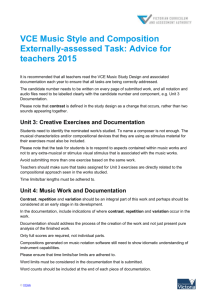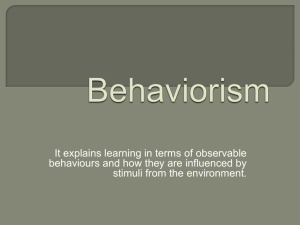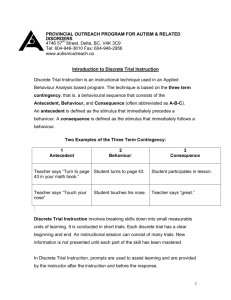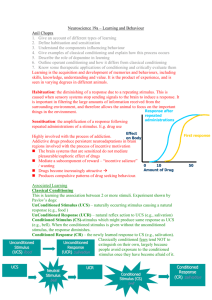Consumer)Behaviour)(MKTG201)!
advertisement
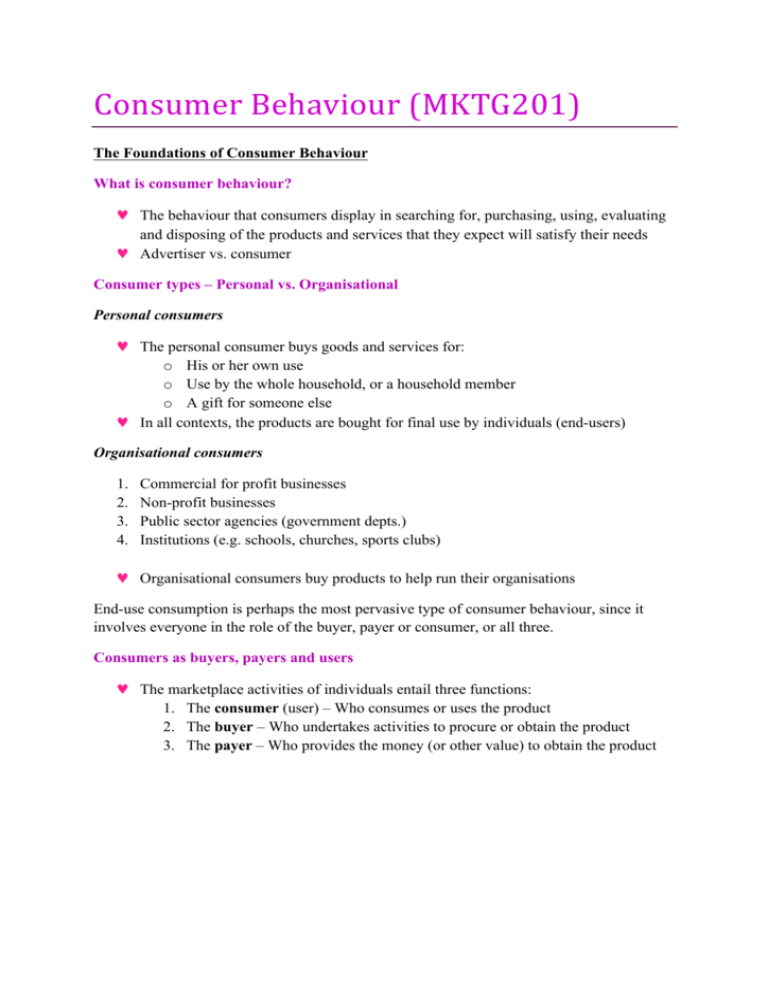
Consumer)Behaviour)(MKTG201)! The Foundations of Consumer Behaviour What is consumer behaviour? ♥ The behaviour that consumers display in searching for, purchasing, using, evaluating and disposing of the products and services that they expect will satisfy their needs ♥ Advertiser vs. consumer Consumer types – Personal vs. Organisational Personal consumers ♥ The personal consumer buys goods and services for: o His or her own use o Use by the whole household, or a household member o A gift for someone else ♥ In all contexts, the products are bought for final use by individuals (end-users) Organisational consumers 1. 2. 3. 4. Commercial for profit businesses Non-profit businesses Public sector agencies (government depts.) Institutions (e.g. schools, churches, sports clubs) ♥ Organisational consumers buy products to help run their organisations End-use consumption is perhaps the most pervasive type of consumer behaviour, since it involves everyone in the role of the buyer, payer or consumer, or all three. Consumers as buyers, payers and users ♥ The marketplace activities of individuals entail three functions: 1. The consumer (user) – Who consumes or uses the product 2. The buyer – Who undertakes activities to procure or obtain the product 3. The payer – Who provides the money (or other value) to obtain the product Why study consumer behaviour? Reasons to better understand consumers: ♥ ♥ ♥ ♥ ♥ ♥ ♥ ♥ ♥ Evolving consumer preferences Increasing environmental concerns Growth of services marketing Growth of global marketing Growth of non-profit marketing Need for consumer protection Changing lifestyles Changing technology Shorter product life cycles Development of the marketing concept ♥ ♥ ♥ ♥ ♥ Production concept Product concept Selling concept Marketing concept Social marketing concept Social marketing concept: ♥ A restructured definition of the marketing concept ♥ Seeks to fulfil the needs of the target audience in ways that improve society as a whole while also fulfilling the objectives of the organisation ♥ Marketers should adhere to principles of social responsibility in the marketing of their goods and services and satisfy the needs and wants of their target markets in ways that preserve and enhance the well-being of consumers and society Why consumer research is used ♥ ♥ ♥ ♥ ♥ ♥ To gain a better understanding of consumption behaviour To identify and locate appropriate target markets, and to understand their media habits To identify both felt and unfelt (latent) needs To determine how consumers perceive products, brands and stores Identify attitudes before and after promotional campaigns Identify how and why they make their consumption decisions. The marketing mix ♥ ♥ ♥ ♥ Product/service – features, designs, brands, packaging, augmentation. Place – distribution via stores and non-store outlets Promotion – advertising, sales promotion, public relations and sales efforts Price – list price, discounts, payment methods. Drivers of successful relationships between markets and customers 1. 2. 3. 4. Providing customer value Customer satisfaction Building customer trust Customer retention What is customer value? ♥ Customer’s perceived benefits (economic, functional and psychological) ♥ Customer’s resources used (money, time, effort and psychological) Customer satisfaction ♥ Consumer’s perception of performance compared to consumer’s expectation of performance … if exceeded, very satisfied; if equalled, satisfied; and if not met, dissatisfied. Customer trust ♥ Challenge of establishing and maintaining consumer trust in a company and its products ♥ Word of mouth and recommendations from other consumers are highly rated measures of trust ♥ Trust is the foundation for maintaining long-term relationships with customers Customer retention ♥ Strategy of retention is to make it in the best interest of customers to stay rather than switch ♥ Research shows small reductions in customer defections product significant profit increases due to the fact that: 1. Loyal customers buy more products 2. Loyal customers are less price-sensitive 3. Cheaper to service existing customers 4. Loyal customers spread positive word-of-mouth and refer other customers to the company In(his(study(he(paired(the(sound(of(a(bell(with(meat.(Over(time(the(dogs(associated( the(bell(with(food( In(a(consumer(behaviour(context,(conditioned(stimuli(consist(of(consumption(objects(such(as( wellHknown(brands(and(symbols,(and(the(conditioned(response(would(be(purchases(or(store( patronage.(( o • Marketing)applications)of)classical)conditioning) Repetition' • • • • • Repetition(increases(the(strength(of(association(between(a(conditioned(stimulus(and(the( unconditioned(stimulus( The(relationship(between(repetition(and(memory(is(complex(however( Repetition(beyond(what(is(necessary(is(what(aids(consumer(retention.(( However,(with(a(greated(number(or(repetitions,(retention(may(decline( This(is(known(as(advertising(wear(out(and(this(can(be(avoided(by(varying(aspects(of(the( message( ( Stimulus(generalization! • • • • • • • • • • • Making(the(same(response(to(slightly(different(stimuli! Pavlov(also(found(that(the(dogs(would(salivate(at(the(thought(of(food(not(only(to(the(ringing( of(the(bell,(but(to(the(jangling(of(keys(etc! Some(marketers(apply(this(by(introducing(‘meHtoo’(products(which(use(similar(packaging(and( aim(to(evoke(a(similar(response(to(the(stimuli(of(the(original(product.(! Market(challengers(encourage(stimulus(generalization! Family(branding(is(another(stimulus(generalization(strategy,(by(which(a(whole(line(of( company(products(go(under(the(same(brand(name! This(capitalizes(on(the(consumers(ability(to(generalize(favourable(brand(associations(from( one(product(to(the(others.(! Campbell’s(originally(started(with(just(soup,(and(satisfied(consumers(were(willing(to(try(new( Campbell’s(products(based(on(their(response(to(the(original(Campbell’s(products.(! Licensing(is(the(practice(of(renting(names(of(designers,(celebrities,(cartoon(characters(for( products(for(a(fee! This(enables(the(manufacturers(and(marketers(to(receive(instant(recognition(and(implied( quality(for(the(licensed(product.(! Versace(for(example(has(extended(itself(and(licensed(its(name(to(a(hotel(on(the(Gold(Coast.(! Corporations(also(license(their(names(and(trademarks,(usually(for(some(form(of(brand( extension,(where(the(name(is(licensed(to(the(maker(of(a(related(product(and(thereby(enters( a(new(product(category((Godiva(chocolates(licensed(its(name(to(Godiva(liqueur)! ! Stimulus(discrimination! • • • The(selection(of(one(stimulus(from(among(similar(stimuli! Consumer’s(ability(to(discriminate(is(the(basis(of(a(positioning(strategy(which(seeks(to( establish(a(unique(image(for(a(brand(in(the(consumer’s(mind! Market(leaders(want(to(retain(the(top(spot(by(persuading(consumers(to(discriminate! ! IN(REVIEW:(


